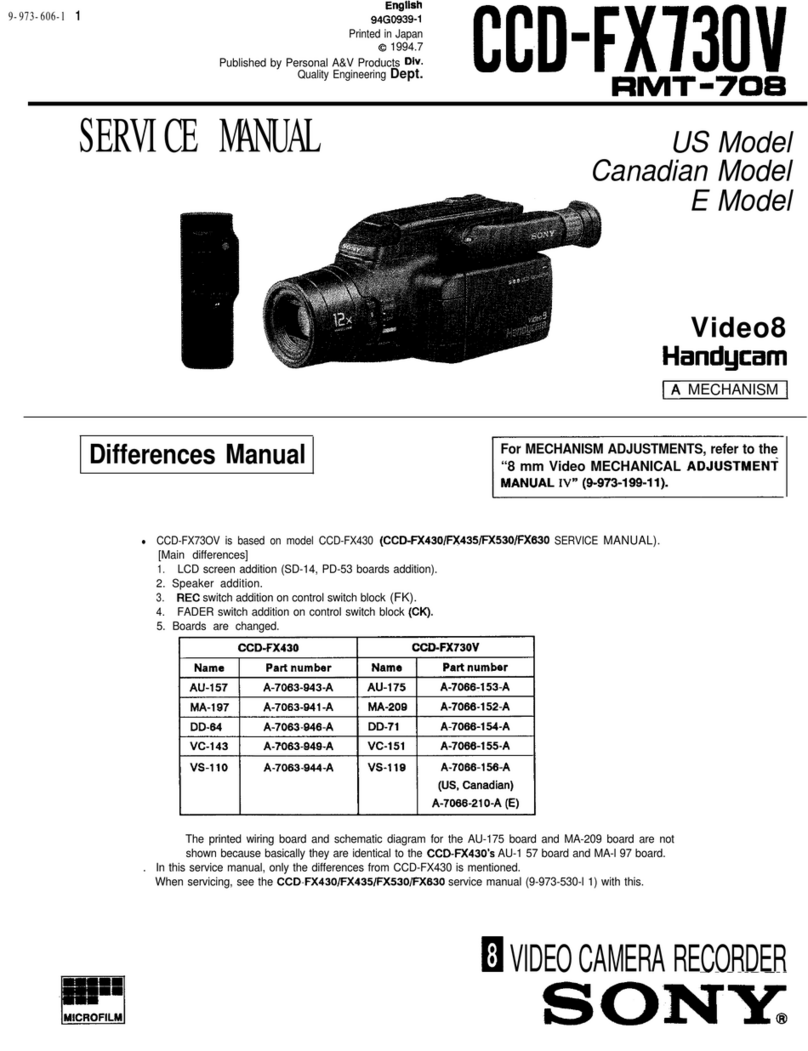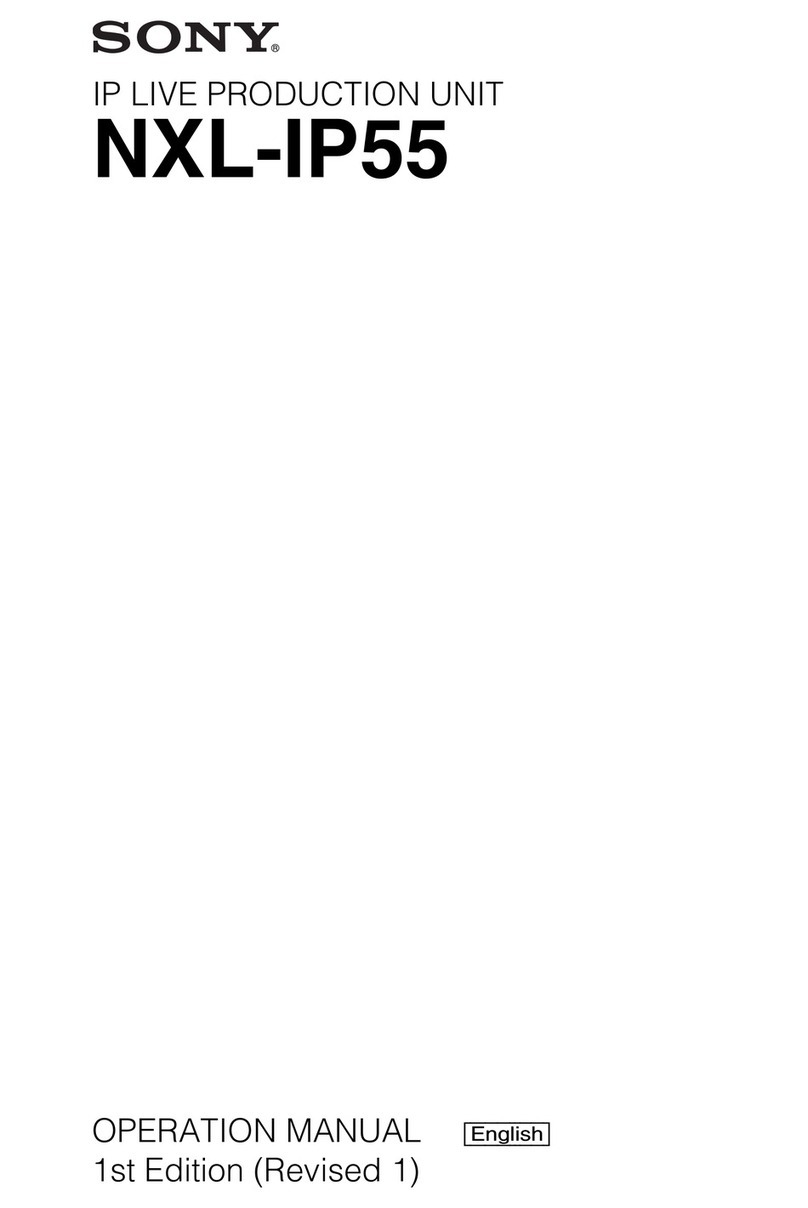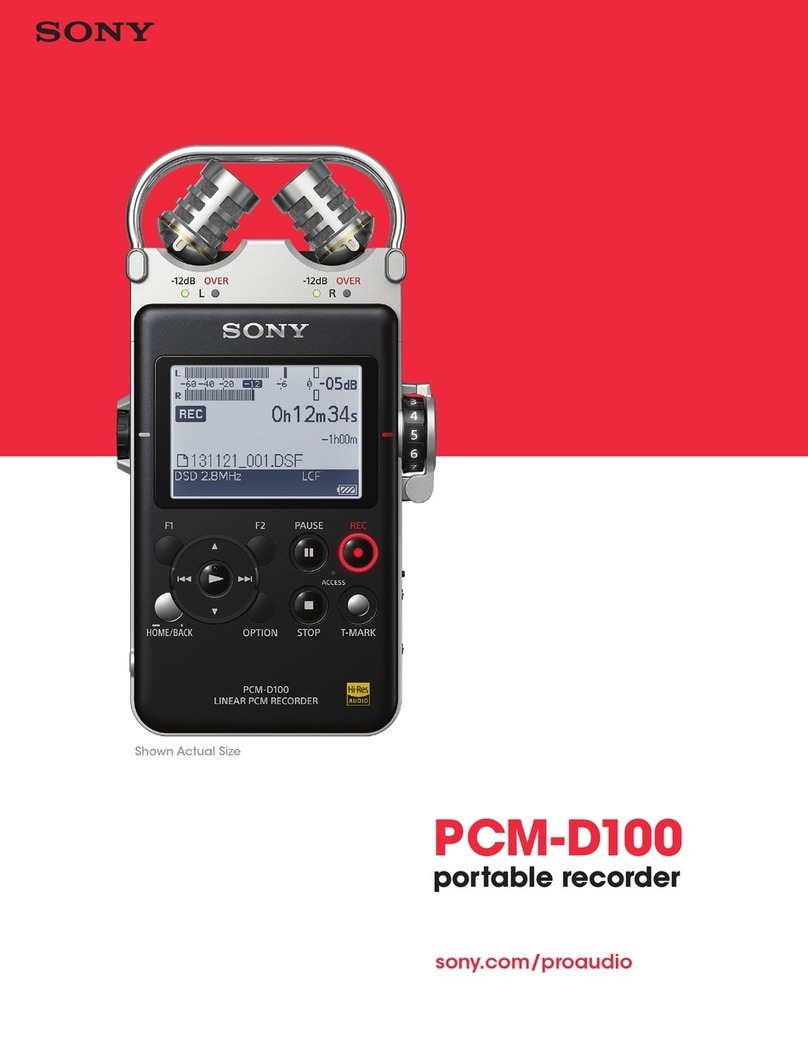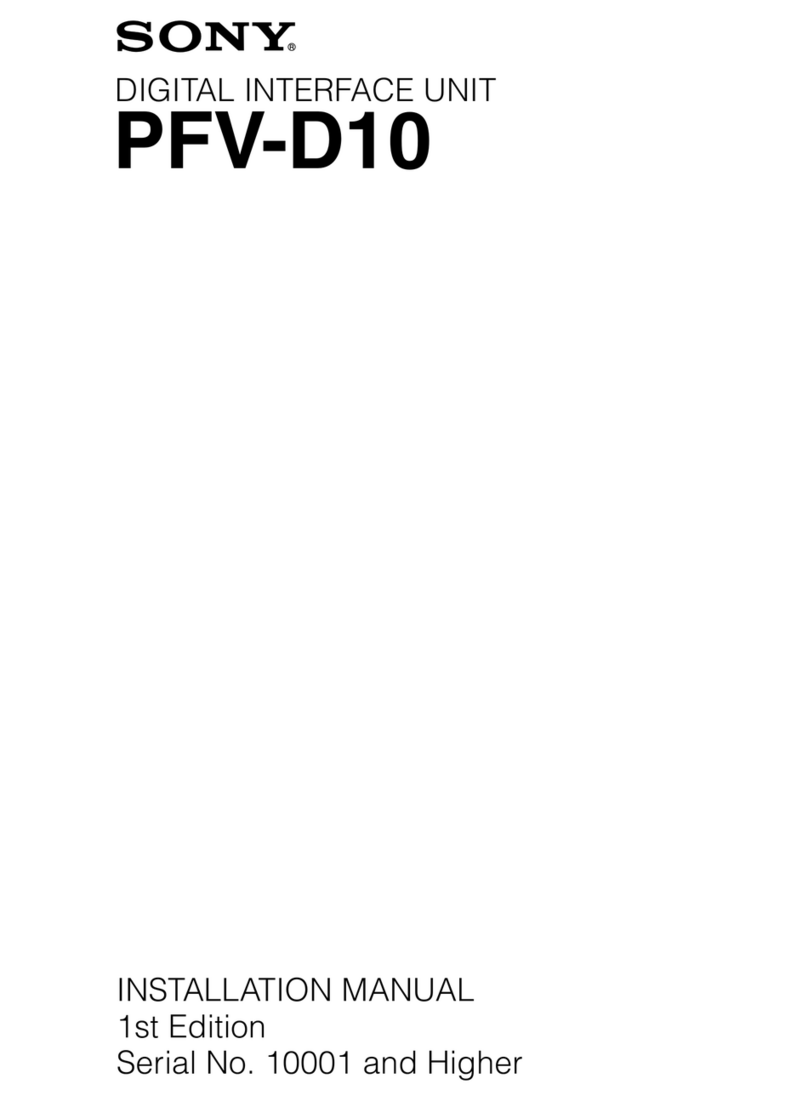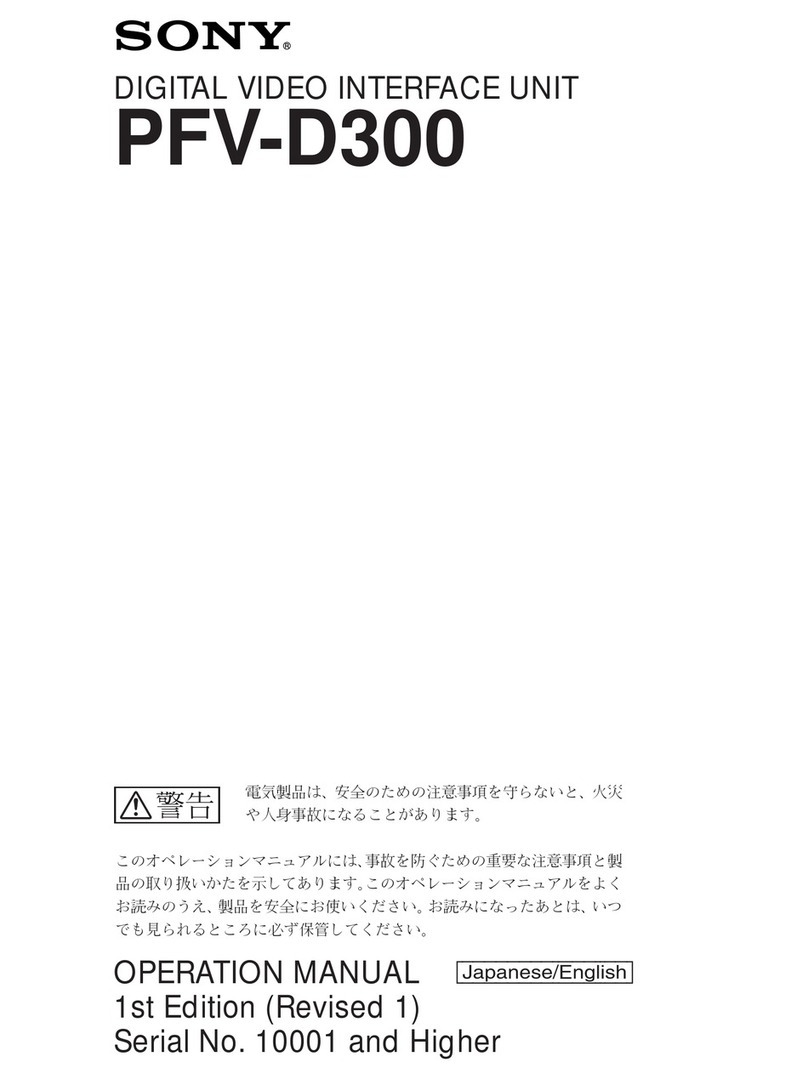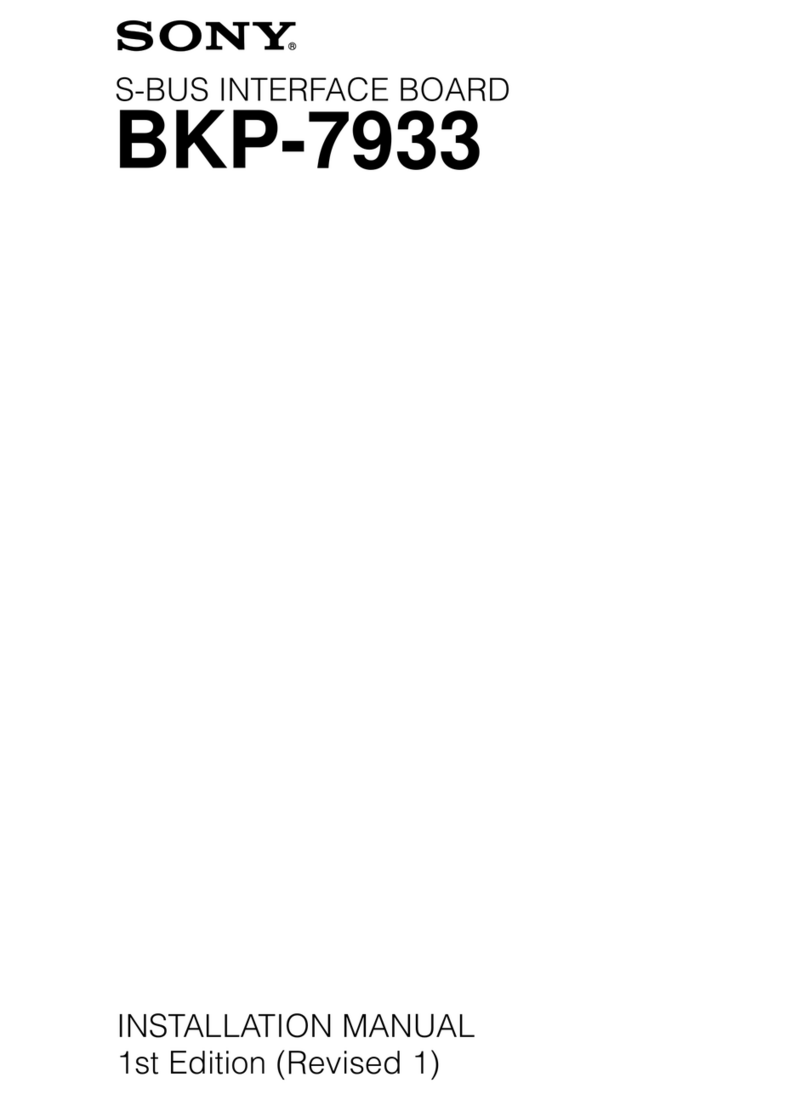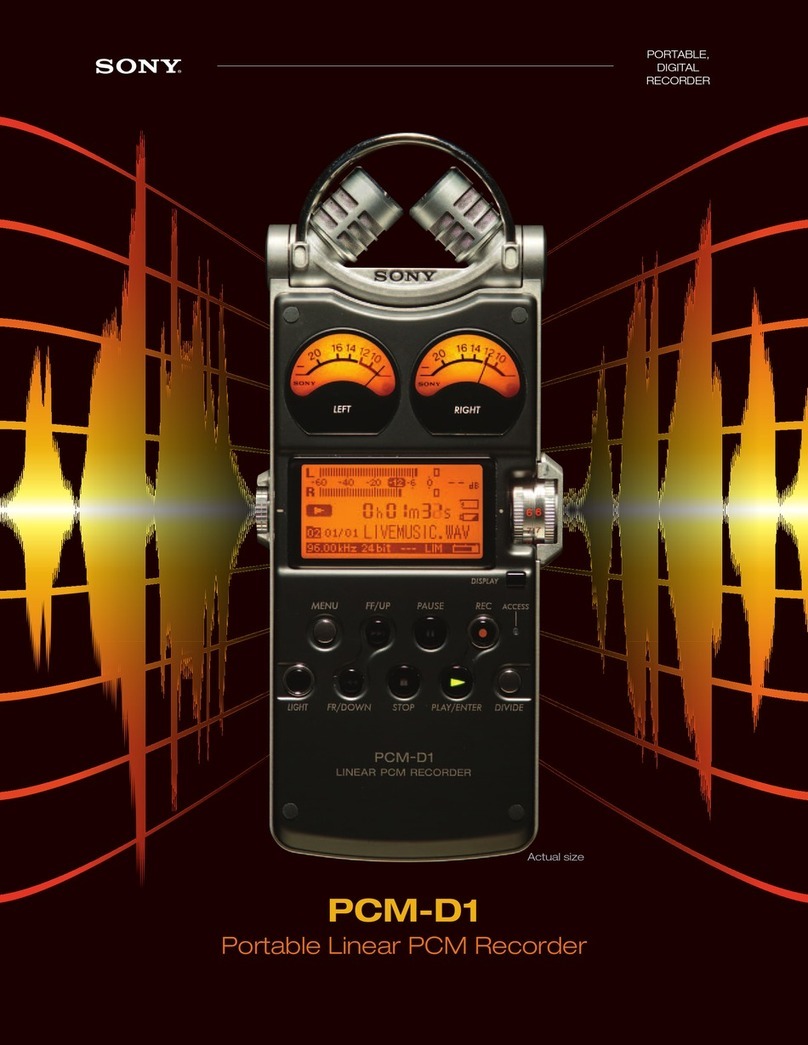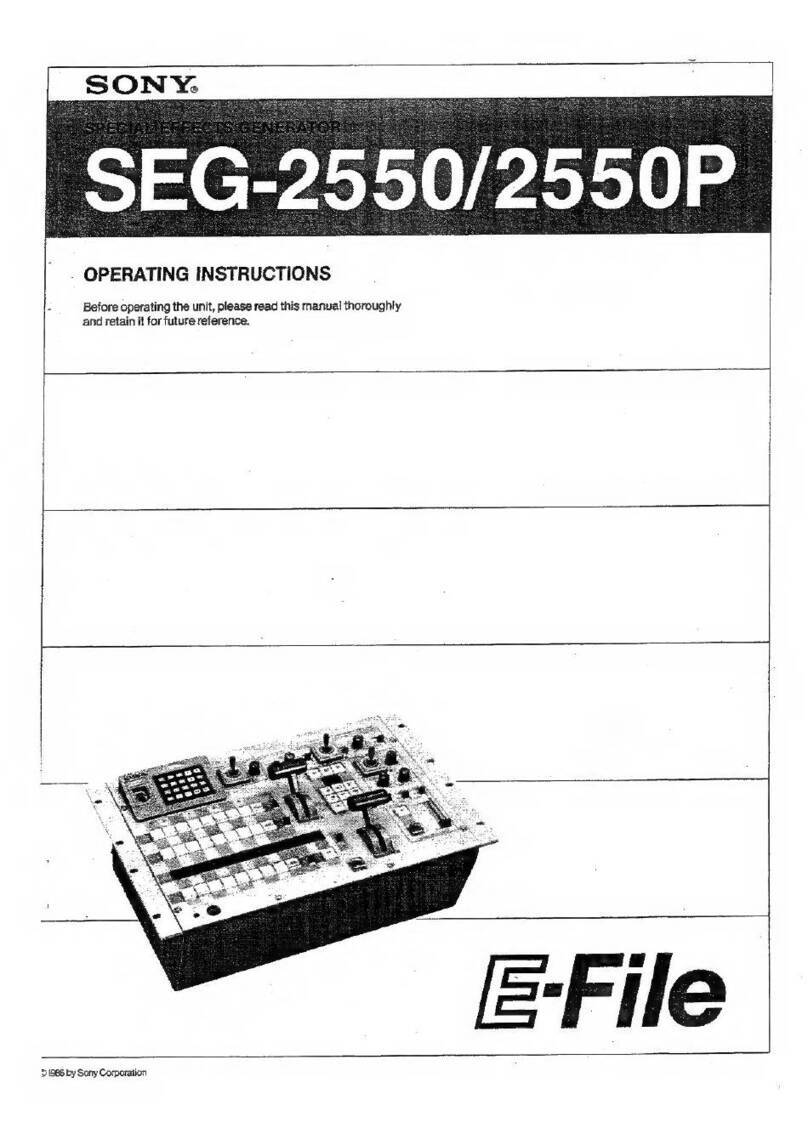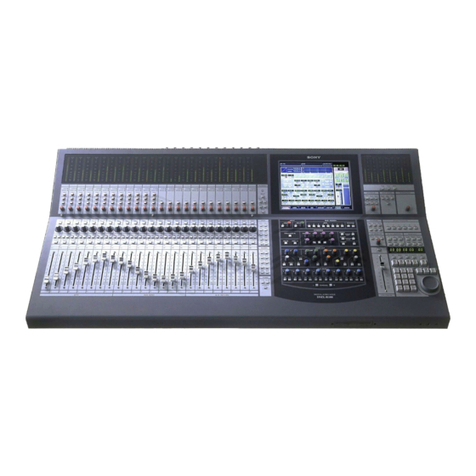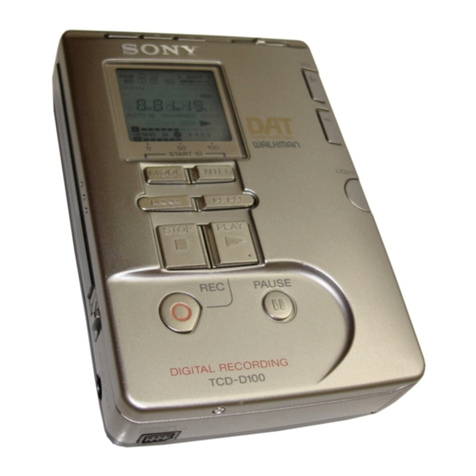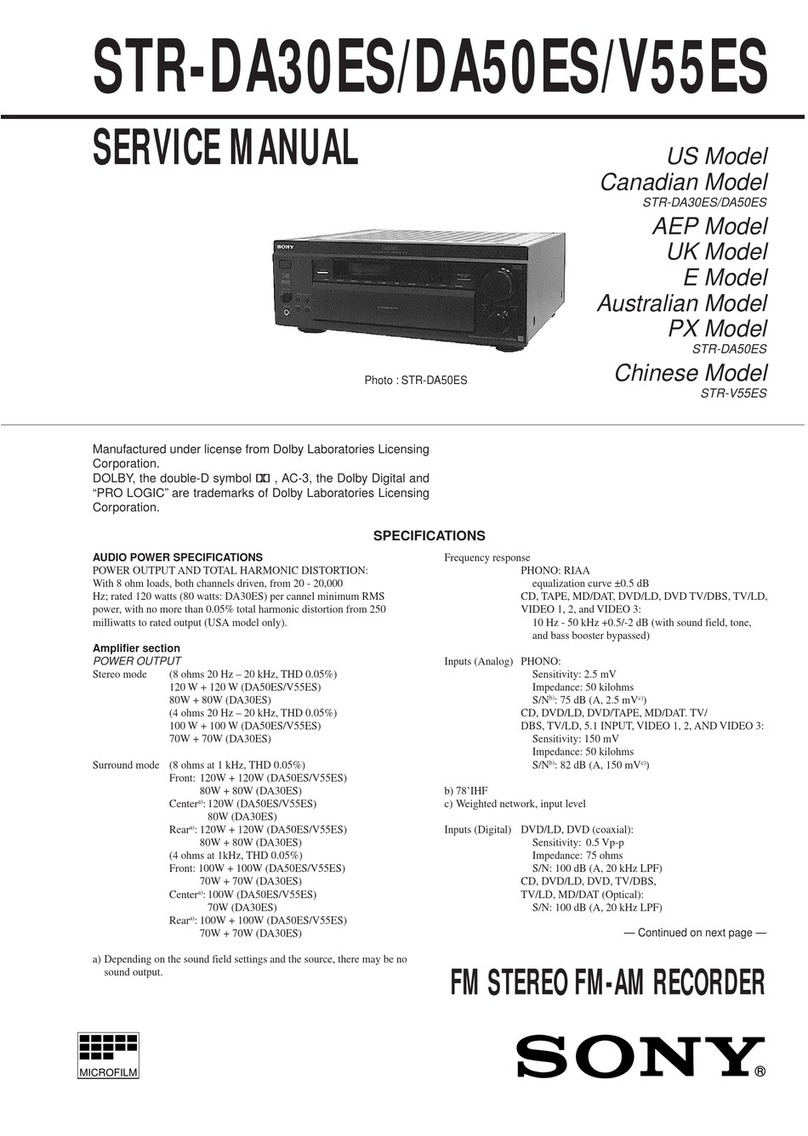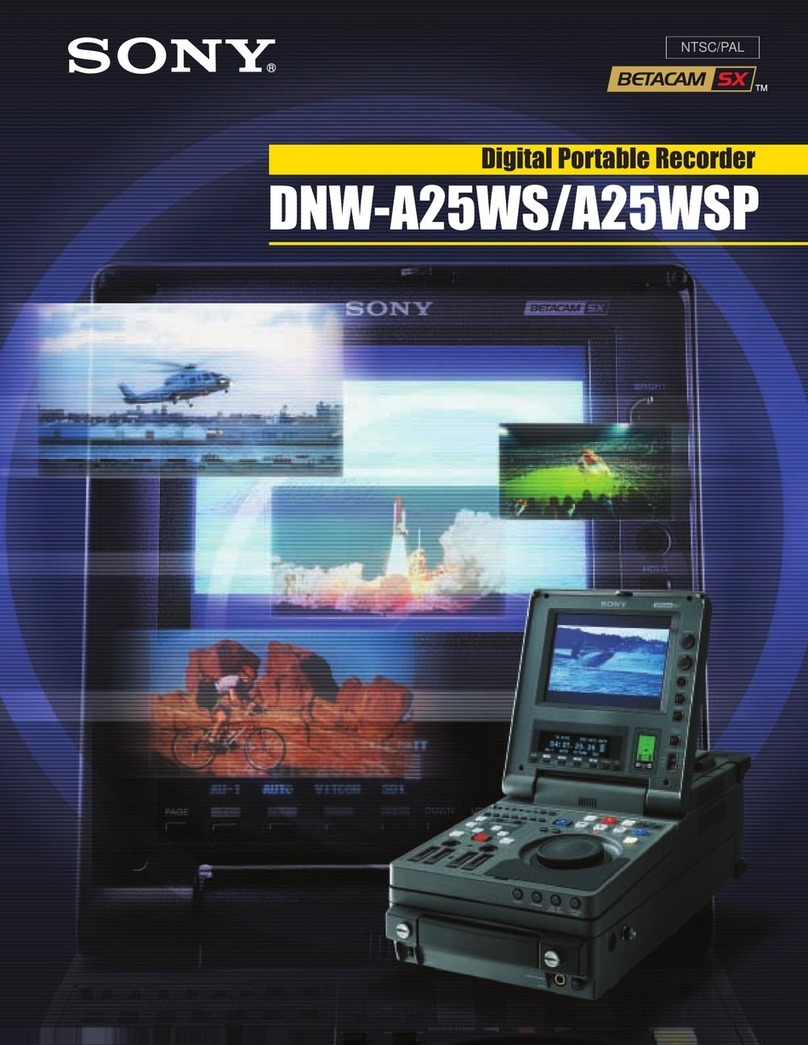
6
Chaper 1 Overview
Chaper 1 Overview
Overview
The DMX-R100 is a compact digital audio mixer for a
post production house that creates digital media or
digital broadcasting.
High quality audio signal processing
The unit allows you to select the sampling frequency
to be used to convert an analog audio signal to a digital
audio signal at 44.1 kHz, 48 kHz, 88.2 kHz or 96 kHz.
When you select either 88.2 kHz or 96 kHz, the
frequency response range expands to 40 kHz.
The analog signal is converted to a 24-bit digital signal
in the mixer. The unit enables AES/EBU format input/
output with at least 24-bit precision. The high
precision floating point unit for internal calculation
results in high quality signal processing.
When either 88.2 kHz or 96 kHz is selected as a sampling
frequency, the number of channels and options boards is
limited.
For details, see page 69.
Easy operation using the high resolution
color LCD and touch panels
The parameters of each channel are displayed in color
and as patterns on one screen. This improves the
operation for equalization or dynamics setting and
allows you to perform operations precisely and
quickly.
Automation functions for professional use
•Snapshot automation
The unit can memorize up to 99 control settings
(snapshots) such as settings of faders and controls on
the channel strips, settings of the equalizer or
dynamics for source signals, signal path, etc., as
snapshot data. You can easily recall the snapshot
data, allowing you to preset programs
instantaneously.
•Full-dynamic automation
You can select either SMPTE or MTC (MIDI
timecode) as the timecode for reference.
The unit can memorize and recall parameters such as
faders, pan controls, equalizer, dynamics and AUX
signal setting. Also the fader with the touch-sensor
improves operation. A scene stored as a snapshot data
can be linked with a cue point that is defined as
timecode. These functions provide you with the same
function as those of a large console-type mixer.
•You can store snap automation data and dynamic
automation data on a 3.5-inch floppy disk.
Usage of channel strips
The LEDs of the pan controls and faders on the
channel strip for each channel allow you to know the
analog data at a glance. You can define the desired
parameters to pan pots and faders, directly confirming
analog data on the channel strips.
Flexible built-in matrix switchers
•The built-in input matrix switcher allows you to
assign standard analog input, digital input or input
from option boards to any desired channel. You can
change the switcher operation easily using the touch
panel on the screen.
•The built-in output matrix switcher allows you to
assign the outputs of PGM buses, AUX buses and
MTR buses to the output of the desired option boards.
Also, the unit can output one signal to different
output connectors at the same time.
Large number of channels
•The unit is equipped with 24 analog channels which
can input a wide variety of analog sources. Also, the
unit is equipped with XLR connectors and standard
TRS jacks.
•In addition to 48 channels with full functions, the unit
has 8 AUX returns. This allows you to mix up to 56
channels at the same time. Also, the PGM bus, AUX
bus and MTR bus are equipped with equalizer and
dynamics control.
•The unit has four optional slots. You can input and
output audio signals of up to 8 channels to one
optional slot. Thus, maximum 32 channels of inputs/
outputs are available for four slots.
Surround mode
•5.1 surround mode can be set using the MTR bus.
•Since the unit has 6 channels for surround monitors
as standard equipment, it is not necessary to add
outputs for monitoring.
•You can control the surround pan with touch panel
operation.
Stored sound images can be recalled using dynamic
automation.
Connection to video equipment
•The unit can synchronize with video equipment such
as a digital VTR, by supplying reference video
signals. Since the unit is equipped with video input
connectors, it is not necessary to add other
equipment.
•The unit can control up to 2 external devices
conforming to the Sony 9-pin remote serial interface,
by connecting external devices such as a VTR to the
remote connector on the rear panel.
